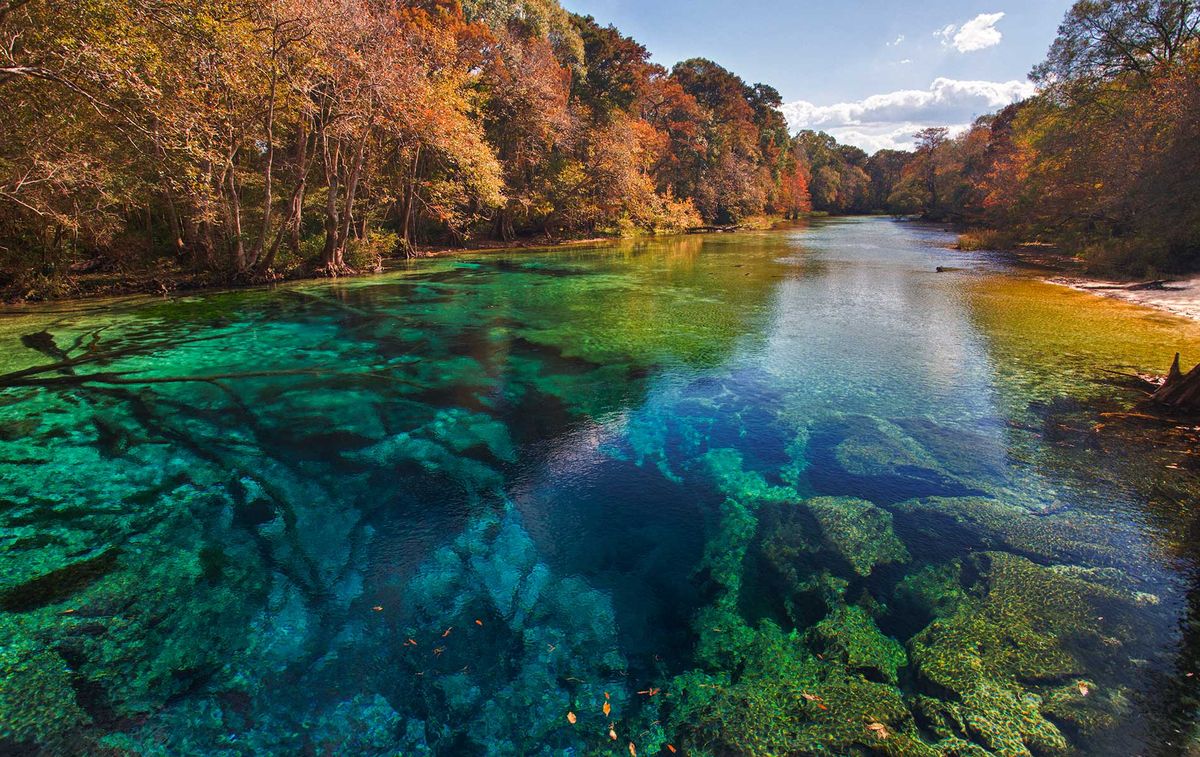Secrets Of Florida’s Ancient Indigenous Waterways

Have you ever wondered about the hidden stories of Florida's ancient indigenous waterways? These waterways, once bustling with life, hold secrets of the past. Long before modern cities, indigenous tribes thrived along these rivers and streams. They used them for travel, trade, and sustenance. Imagine paddling through the same waters where ancient canoes once glided. These waterways are not just historical; they are a living testament to the ingenuity and resilience of Florida's first inhabitants. Join us as we uncover the mysteries and marvels of these ancient paths, revealing a world that existed long before our time.
Discovering Florida's Ancient Indigenous Waterways
Florida's waterways have a rich history, shaped by the indigenous tribes who once thrived along these rivers, lakes, and springs. Exploring these ancient paths offers a glimpse into the past and a chance to connect with nature in a profound way. Let's dive into some of the most significant waterways that tell the story of Florida's first inhabitants.
The St. Johns River
The St. Johns River, one of the longest rivers in Florida, was a vital resource for the Timucua people. This river provided food, transportation, and a means of trade.
- Blue Spring State Park: Known for its crystal-clear waters, Blue Spring was a winter refuge for manatees and a year-round resource for the Timucua.
- Hontoon Island State Park: This island in the St. Johns River was home to the Timucua, who left behind shell mounds and other artifacts.
- Lake George: The second largest lake in Florida, Lake George was a significant fishing and hunting ground for indigenous tribes.
The Suwannee River
The Suwannee River, flowing from Georgia to the Gulf of Mexico, played a crucial role in the lives of the Seminole and other tribes. Its dark, tannin-rich waters are steeped in history.
- Manatee Springs State Park: This park features a first-magnitude spring that has been a gathering place for humans for thousands of years.
- Suwannee River State Park: Located where the Suwannee and Withlacoochee Rivers meet, this park contains ancient burial mounds and other archaeological sites.
- Fanning Springs State Park: A popular spot for swimming and picnicking, Fanning Springs was also a significant site for indigenous peoples.
The Everglades
The Everglades, a vast network of wetlands, was home to the Calusa and Tequesta tribes. These waterways were essential for their survival and culture.
- Big Cypress National Preserve: This preserve protects over 700,000 acres of the Everglades, including ancient Calusa shell mounds.
- Shark Valley: Part of Everglades National Park, Shark Valley offers a glimpse into the unique ecosystem that sustained indigenous tribes.
- Ten Thousand Islands: This labyrinth of mangrove islands was a crucial area for the Calusa, who built shell mounds and canals.
The Apalachicola River
The Apalachicola River, flowing through the Florida Panhandle, was a lifeline for the Apalachicola people. Its fertile floodplains supported agriculture and settlement.
- Torreya State Park: Named after the rare Torreya tree, this park contains remnants of ancient indigenous settlements.
- Apalachicola National Forest: This forest, the largest in Florida, is home to numerous archaeological sites and ancient trails.
- Fort Gadsden Historic Site: Located along the Apalachicola River, this site has a rich history, including its use by indigenous tribes.
The Peace River
The Peace River, winding through Central Florida, was a vital resource for the Calusa and other tribes. Its waters provided food, transportation, and a means of trade.
- Paynes Creek Historic State Park: This park preserves the site of a 19th-century trading post and contains evidence of earlier indigenous occupation.
- Peace River Canoe Trail: Paddle along this scenic river to experience the same waters that sustained indigenous tribes for centuries.
- Bone Valley: An area rich in fossils, Bone Valley was also an important site for indigenous peoples who left behind artifacts and burial mounds.
Discovering Florida's Hidden History
Florida's ancient indigenous waterways offer a unique glimpse into the past. These routes, carved by nature and used by native tribes, reveal a rich history often overlooked. Exploring these waterways, you can see how the indigenous people lived, traveled, and thrived in harmony with their environment.
From the winding rivers to the serene lakes, each waterway tells a story. The artifacts and remnants found along these paths provide valuable insights into the daily lives and cultures of Florida's first inhabitants. Paddling through these historic routes, you not only enjoy the natural beauty but also connect with a time long gone.
Understanding and appreciating these ancient waterways helps preserve their legacy. It reminds us of the importance of protecting our natural and cultural heritage. So next time you're in Florida, take a moment to explore these hidden gems and uncover the secrets they hold.

